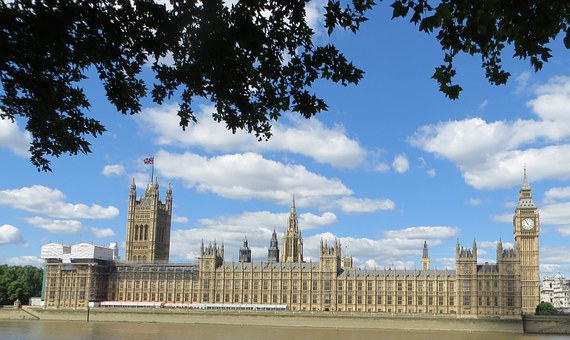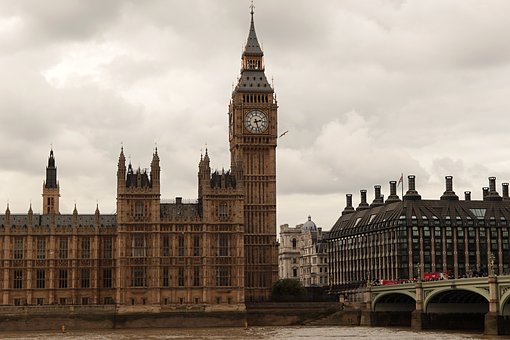How and why did Colonial American economies grow ? 1600 -1770

How and why did Colonial American economies grow
? 1600 -1770How and why did Colonial American economies grow ?
Economic growth is the steady process of increasing productive capacity of the economy and hence of increasing national income. There has been, and still is, great controversy over the way in which the colonial economy grew and the reasons for this. We will deal with the description of economic growth first. There can be little doubt that total output expanded rapidly over the colonial period. The rapid rate of population growth , and the rising volume of exports and imports suggest a rapid acceleration of aggregate output. But we lack any accurate measures of the growth of real per capita output which enables us to assess any long run trends of rate of growth in the colonies.
Both foreign trade figures and population totals are vague (this will be explored later when discussing the explaining the growth of the economy). The best that can be done is guess work based on limited qualitative and quantitative evidence. Walton and Shepherd think that the evidence suggests that the most rapid rates of productivity advance came as early as the seventeenth century while G Taylor has suggested that the growth of the real product per capita before 1710 was slow and irregular and that between 1710 and 1775 it averaged 'slightly more than one percent per annum'.

However, as Walton and Shepherd point out in view of the predominance of agriculture and the low rate of apparent productivity improvement in that sector in the eighteenth century it is difficult to imagine that the growth of output per capita could even be this. There seems to be as many descriptions of growth over time as there are historians. Goldsmith thinks the real boom period was during the nineteenth century and well out of the range of this essay. However, perhaps some very tentative description can be made. Walton and Shepherd think that the relatively fast growth of the seventeenth century was followed by slower growth in the eighteenth. Mark Egnal in a survey of the thirteen colonies thinks that eighteenth century economic growth was neither smooth nor uniform. The considerable growth of the 1720s and 1730s was followed by a period of stagnation by the 1740s which was in turn replaced by a period of expansion from 1745 to 1760. with a gradual slow down in the rate of growth after that date.
In addition to the overall picture we have more specific studies indicating economic growth such as those of Gallman who calculates that 0.3 to 0.5% growth was the norm. However, I do not think that any of these descriptions are particularly convincing. Growth rates would vary from colony to colony depending on a whole host of factors from climate, geography, soils, socio-economic systems to types of crops grown, labor systems and availability of markets. I think it would be almost impossible to develop a general picture that could include New England economic growth rates and those from the West Indies. The question posed was why did colonial economies grow and the emphasis should be placed on the diversity of economies in North America all growing at different rates. The only solid conclusion was can draw is that by 1776 material progress and economic growth had occurred - the state of research does not allow an exact record of progress since early colonization.
Arguably a more fruitful question would be why those economies grew because this would allow a discussion of important topics such as foreign trade and demography. Traditionally historians have explained economic growth by referring to these two factors. The purpose of the remainder of this essay is to explain colonial economic growth in terms if internal elements e.g. demography, but also capital supply and land ( topics until which recently have been greatly neglected) and external factors e.g. America's role in the imperial context and her foreign trade.
J. Potter calculated the rate of natural increase in the population was in the region of 26-30% per decade during the eighteenth century which although below the Malthusian formula is still higher than in England. This figure has already been adjusted for slave importation and white immigration. Benjamin Franklin and C.P. Nettels felt that white immigration was the key to economic expansion. Many historians point to the value of demographic growth to the economy as more labor is provided and a larger market created. However, the 'Malthusian' school of colonial economic historians including Stiverson, Henretta and Daniel Scott Smith emphasize the limits placed upon acquisitive market mentality by continual population pressure on resources leading to low productivity and subsistence agriculture stemming from constraints of geography and technology in addition to social relationships and cultural expectations.
The Malthusians tried to shift the focus away from a market oriented , export led approach to an essentially demographic interpretation of colonial economic development. I think this is a worthwhile aim because it broadens the debate but also because I think that many seventeenth and eighteenth century colonists, who were typically farmers, did not necessarily act completely rationally towards the market and were probably profit satisficers rather than profit optimizers as J. Lemon would have us believe. We should be careful of viewing the workings of the seventeenth and eighteenth century colonial economies through twenty first century preconceptions.
Henretta focuses on 'family' explanations of economic growth - how families sustained themselves and sold off surpluses. Family economics was determined fundamentally by ethnic, linguistic, and religious ties and only secondarily by market forces. Traditional social values played a far greater role in determining economic behavior than the market stimulated desire emphasized by Lemon. In addition I think that demographers would do well to consider the work of Wrigley and Schofield in eighteenth century England particularly when forming conclusions. One thing emerges quite clearly from controversy that they have raised . There can be no simple explanation of economic expansion by referring simply to demographic increase because an increase in population may itself be the result of an expanding economy. The increase demand for labor in an expanding economy leads ceteris paribus to an increase in real wages allowing couples to marry earlier in theory and then produce more offspring. Hence we have a classical circular argument of economic growth leading to population expansion and vice versa.
Perhaps slightly firmer conclusions can be reached when we discuss the influence of the money supply on the economy. John McCusker and J.M. Price have conducted extensive studies in this field. Price thought that the immense debts of tobacco growers contributed to psychological unease and a revolutionary ethos.. But the traditional view that issues of colonial paper money caused inflation that enabled debtors to defraud creditors was refuted by Brock and Fergusson. Ersnt finds numerous reasons to question those who used the quantity theory of money to show how monetary policy influenced overall price levels and exchange rates. R.C. West writes that without the new types of means of settlement the internal economic growth might have been severely retarded. But I think that much more work needs to be done on this particular subject and money supply in colonial America itself seems an elusive subject.
Commodities such as tobacco could serve as money in addition to specie and W.T. Baxter argues convincingly for the inclusion of merchant's books of credit in the money supply. Colonial America's connection with the London money market undoubtedly helped economic growth. We have thus dealt with labor ( indirectly through our discussion of demography ) and capital. The natural resources of colonial America constitute the third factor of production. Land was according to Edwin Perkins the real strength of the American colonial economy. I think the relatively easy availability of land must have been central to economic expansion especially when we consider that 80-90 % of the workforce were engaged in agriculture.
But once again we are hindered by the lack of research on land acquisition's contribution to economic growth except in the most general and obvious sense. Similarly techniques of production can be thought of as another source of economic growth but one which certainly does not appear in the conventional historiography of colonial economics. Only Schumaker has explored colonial manufacturing and much more work needs to be conducted on the processing of agricultural products and shipbuilding and iron production in cities to list but a few examples.
In summary to the first section of this essay we can see how internal factors such as population growth, labor, money supply, methods of payment and incentives, land, techniques of production, economic climate and social attitudes all affected the way in which the colonial economy grew. This has the virtue of comprehensiveness but really does not tell us which factors were more influential than others and also the links between these factors and economic experience are more complex than at first appears as we have seen in the case of land. Such lack of evidence has persuaded many historians to focus on external causes of economic growth for the seventeenth and eighteenth centuries.
Here the central topic has been foreign trade. There seems to be an abundance of evidence here initially available from the public record office and custom inspectors reports which Elizabeth Schumpter and Ralph Davis were the first to use. Besides physical quantities of goods shipped specific prices are needed and these were provided in the 1920s by the International Scientific Committee on Price History. We have Coles and Beyanson's Philadelphia series in addition to merchants accounts to give us some idea of foreign trade. However, I do not think that the discussion of foreign trade's influence on economic growth has lived up to the expectations set by the evidence. Recent debate has focussed on whether or not the staples model is an adequate explanation of the colonial economy. The staples model faces problems. For example between 1700 and the 1770s tobacco exports treble while population in the colonies rose by approximately x 7.4.
Since there is no evidence of a decline in income per head it is fairly obvious that a lot more was going on in the Chesapeake besides growing tobacco.. The staple effect was still working i.e. external demand was encouraging the direction of further resources towards tobacco production but the monocausal single commodity staple thesis is no longer very helpful. Similarly in the West Indies subsistence crops and other activities are important in addition to sugar cultivation.
Colonial America's economic links with Britain are obviously vital to any discussion of the causes of economic expansion. According to the theory of comparative advantage England and America should have benefited from each other. However, there is a great deal of controversy over the effects of the colonial system. Laurence Harper found that the Navigation Acts 'placed a heavy burden upon the colonies' but Thomas and Walton came to the opposite conclusion i.e. that membership in the British Empire did not impose a significant hardship on the American colonies. But because of the doubtful quality of eighteenth century statistics no attempt was made to estimate actual costs or benefits to the last shilling.
In addition all attempts at explanation or measurement require a standard of comparison. The comparative, or alternative arrangement - a world without British colonies is counterfactual. The major burden of the Navigation Acts fell upon colonial exports of enumerated goods such as tobacco, forced to go through Britain rather than directly say to Holland. The question is, what would have been the price of tobacco in Virginia without the burdensome extra transportation imposed by the Navigation Acts. Thomas thinks prices would have been one third higher for tobacco and he multiplies this by the figures for other enumerated goods to estimate that the total colonial income was only reduced by 1.8% and this was the burden of Empire.
Thomas thinks that once the total benefits of protection and government are subtracted from the burden the net cost to the colonies was very small, perhaps as little as one quarter of a per cent of income in 1770. This seems a valiant attempt to draw conclusions about the effect of foreign trade and connections with Great Britain upon the expansion or retarding of the colonial economy but counter factual analysis is riddled with problems such as the selection of the appropriate counterfactual. Also there is a grave danger of becoming entangled in a circular argument again because foreign trade could motivate economic expansion and vice versa.
From this we can see that few firm conclusions can be drawn as to why the American economies grew. Foreign trade undoubtedly played some role but we run into great difficulties when we try to quantify this. If we stick to a rigid definition of economic growth as an equivalent to an increase in the economy's productive capacity measured as a percentage of rise in real annual national income averaged out over a period of time to eliminate cyclical variations it can clearly be seen that we do not have good enough statistics to feed into the equation to get any kind of meaningful answer. Economic growth is important to twenty first century eyes because it normally increases living standards, eliminates poverty, at least relative poverty, increases government revenue without increasing taxation and redistributes income. But to seventeenth and eighteenth century minds economic growth could be seen as representing harmful change and instability - an although they would not have described it in these terms economic growth could be seen as an opportunity cost or a sacrifice of consumption in the present. In addition growth has social costs e.g. overcrowding or insanitary conditions known to the modern day economist as negative externalities.
In conclusion the economic growth of the colonies has been briefly described and some of the reasons for the expansion given. To our statistically driven oriented society however, the question of which factors were dominant in promoting growth still remains a problem which only further research can solve.
Dr Simon Harding

Chronos Consulting Group
www.chronosconsulting.com
www.coberongreen.com
http://www.articlesbase.com/history-articles/how-and-why-did-colonial-american-economies-grow-1600-1770-3600203.html DUI Perpetrators Must Seek Expert Help New Years Eve London Stylish Sun Hats: A must-have for Summer Fashion! A typical holiday in Lapland How Much Should I Bet When I Play A Sit N Go Tournament? Hamilton Beach 33967 Christmas Gift Melbourne – Something Special for the Person you adore! Exciting Things to do while on Newquay Holidays peninsula travel FIFA Survey Shocker! Most Countries Think Their Own World Cup Squad Is The Best! Enjoy Oliver London Show with Royal Drury Lane Theatre Tickets Greece Travel Guide Mauritius: Beyond the Beach